The Palace of Westminster London is often referred to as the Houses of Parliament where the Houses of Lords and Commons for the British government meet. The Palace of Westminster occupies 873 ft. of Thames River front.
Palace of Westminster seen from Westminster Bridge.
This site in central London beside the Thames was the location of a royal palace nearly 1,000 years ago which served as the primary London residence of Kings. Fire destroyed much of the medieval palace property in 1512. The rebuilt Old Palace became the Palace of Westminster meeting place for the Houses of Parliament.
Palace of Westminster, 1840-1870, seen across Thames River.
Another great fire in 1834 burned down most of the Palace of Westminster beyond repair. The Houses of Parliament were set alight when obsolete wooden tally sticks used to record tax collections for 700 years in England were disposed of by burning at the Palace.
The order was given to burn the tally sticks in the furnaces of the Palace of Westminster. The furnaces overheated, melting the copper exhaust pipes and setting the wooden interior structure of the Palace walls on fire. The inferno of the Houses of Parliament was the largest fire in London since the Great Fire of 1666.
Author Charles Dickens commented that the bundles of tally sticks no longer in use could have been easily disposed of by offering the wooden sticks freely to the poor residents of the area for use as firewood.
Westminster Hall, Palace of Westminster.
Westminster Hall also survived the second great fire of 1834. The wood oak roof is considered one of the greatest medieval wooden constructions in Europe. It is also one of the oldest portions of the Old Palace remaining. Originally built in 1097, the roof of the hall was rebuilt in 1393 during the reign of King Richard II by royal carpenter Hugh Herland using hundreds of oaks to create a hammerbeam roof over a large open space of 68 x 240 ft.
Westminster Hall in the Palace of Westminster, London. November 1808. Thomas Rowlandson (1756-1827) and Augustus Pugin (1768-1832). Public domain copyright.
Palace of Westminster
A design competition for rebuilding the Palace of Westminster after the 1834 fire was won by architect Charles Barry in 1836. He planned a Perpendicular Gothic style palace with over 1,100 rooms organized around two central courtyards.
Augustus Pugin, an authority in gothic design and style, is responsible for many of the details apparent in the Palace structure.
The Palace of Westminster held its official State Opening ceremony February 3, 1852.
The death of the two leading architects and years of cost overruns meant 30 years passed before the new Palace of Westminster was completed. The original plans called for completion in six years at one-third the final cost. Edward Barry, son of Charles Barry, finished some of the architectural work of Victoria Tower after his father’s death.
Victoria Tower, Palace of Westminster.
Victoria Tower, in the southwestern corner of Westminster Palace, is the largest and tallest (323 ft.) of the three main palace towers. This was meant to be the primary feature of Westminster Palace from the original Charles Barry architectural design.
Victoria Tower is the highest tower of the Palace of Westminster.
Sovereign’s Entrance at the base of Victoria Tower is a 50 ft high archway used by the monarch whenever entering Westminster Palace for state occasions.
Sovereign’s Entrance to Westminster Palace.
Victoria Tower.
Victoria Tower houses three million documents in the Parliamentary Archives over 12 floors.
Statue beside Sovereign’s Entrance of Victoria Tower.
The long sides of the Palace of Westminster face the river and the streets with barriers keeping tourists away from the side of the building.
Westminster Hall with Central Tower seen upper right. Central Tower over Central Lobby is one of three main towers for the Palace of Westminster.
Much of the original stone quarried for the Palace of Westminster in the 1840s needed to be replaced as it deteriorated quickly in the pollution of 19th century London.
A printed façade hides restoration work on the building beside New Palace Yard.
The Palace of Westminster will be undergoing major reconstruction work to update many areas that are still primarily parts of the original 1840s construction.
Palace of Westminster security and tourists at New Palace Yard entrance.
Elizabeth Tower is the official name for what we commonly call Big Ben. The former ‘Clock Tower’ was renamed Elizabeth Tower in 2012 in commemoration of her Diamond Jubilee with 60 years on the throne. The name Big Ben actually refers to the largest of five bells in the tower.
Big Ben or Elizabeth Tower at Palace of Westminster London.
Big Ben is the largest four-faced chiming clock in the world and third tallest free-standing clock tower.
This north end clock tower was completed in 1859 based on the design of Augustus Pugin.
View of Elizabeth Tower from west side of Palace of Westminster.
The Clock Tower was designed by Augustus Pugin and stands at 315 feet high (97 m). This was his last design completed in early 1852 for architect Charles Barry. Pugin soon suffered a mental collapse and was institutionalized before he died in September 1852 at the age of 40.
Charles Barry, officially recognized as architect of the Palace of Westminster, apparently omitted Augustus Pugin’s name as one of the chief designers for the Palace of Westminster.
Who was Ben?
Big Ben is the common name used for the tower, clock and bell of Elizabeth Tower at Palace of Westminster, London.
Charles Barry added a clock tower to his Palace of Westminster design in 1836. Construction of the Clock Tower began in September 1843.
A clock design competition in 1846 with Sir George Airy, Astronomer Royal as referee set specifications that the clock had to be accurate to within one second of the hour.
Edmund Beckett Denison, a barrister and amateur clockmaker designed the clock.
Edward John Dent, a respected London clockmaker, was contracted in February 1852 to build the clock to Denison’s design.
Edward Dent died in 1853 and his stepson Frederick completed the clock in 1854 at a cost of £2500.
The clock remained in Dent’s factory until installation in April 1859. Mechanical mobility problems with the heavy cast-iron hands required lighter copper hands before the clock successfully kept time starting May 31, 1859.
The Great Bell as it was originally known rang out for the first time July 11, 1859. In September 1859 the Great Bell cracked and remained silent for four years.
Sir George Airy, the Royal Astronomer, solved the Great Bell problem by making a quarter turn of the Great Bell so the hammer struck the bell in a different spot. Big Ben has chimed ever since with only occasional stoppages.
Ben of Big Ben fame is Sir Benjamin Hall, First Commissioner for Works, 1855-1858.


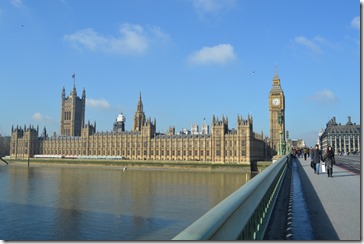
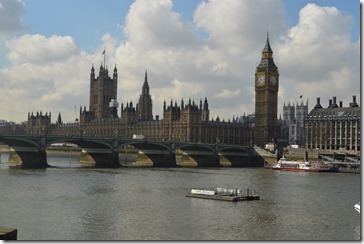


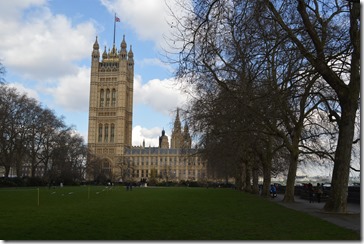

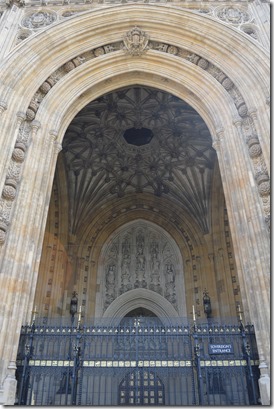
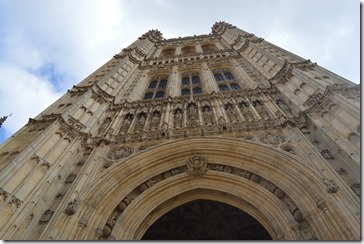
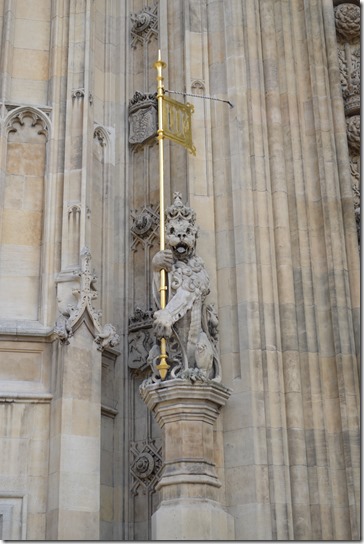


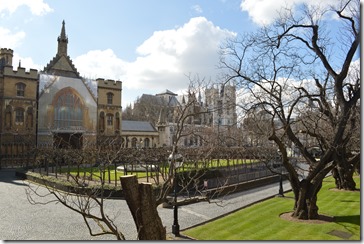
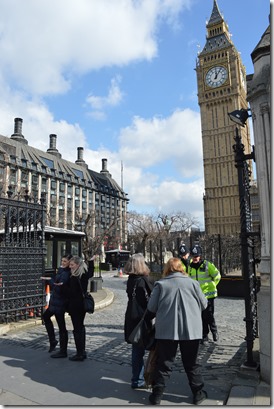
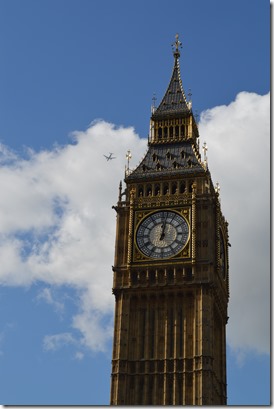
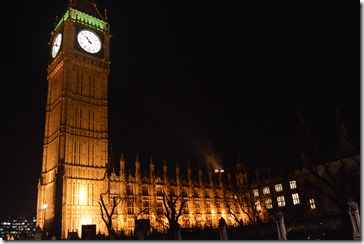
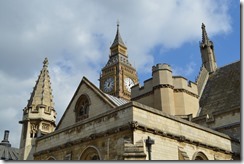
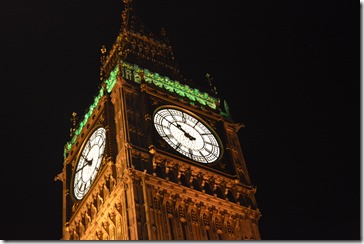
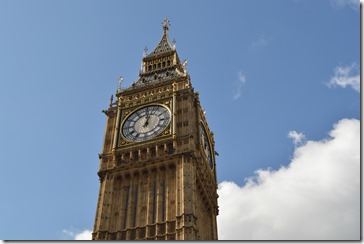

1 Comment
Comments are closed.